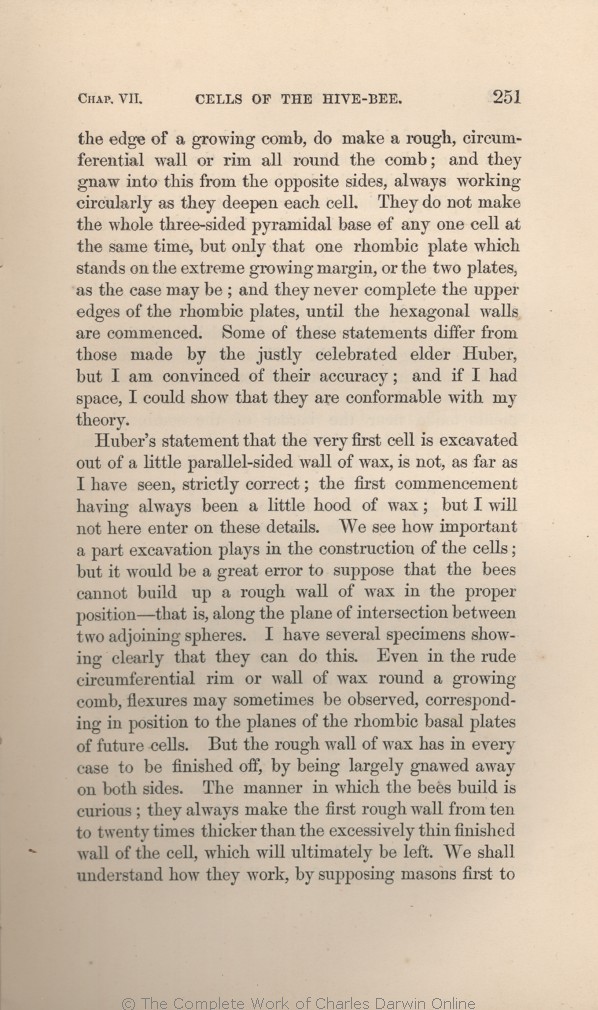the edge of a growing comb, do make a rough, circumferential wall or rim all round the comb; and they gnaw
into | into 1859 1860 1861 1866 | into 1869 1872 |
| from 1859 1860 1861 1866 | | away from 1869 1872 |
| that 1861 1866 1869 1872 | | the 1859 1860 |
|
|
Huber's
statement | statement 1859 1860 1861 | | statement, 1866 1869 1872 |
| these 1859 1860 1861 1866 1869 | these 1872 |
| showing 1859 1860 1861 1869 1872 | | show- ing 1866 |
|









